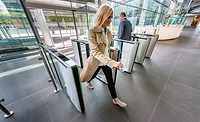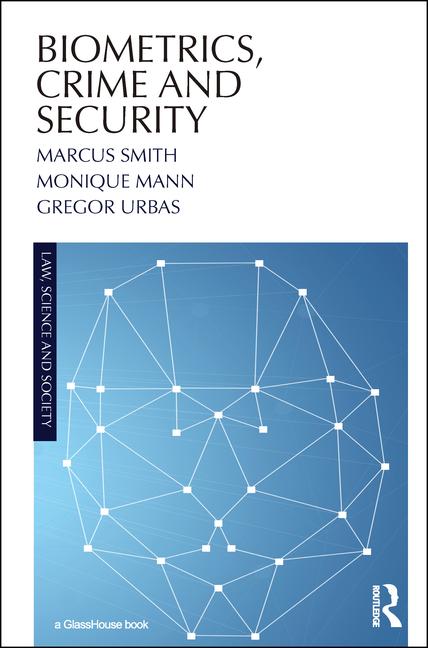Touchless and smart: Entrance control in a post-lockdown world

COVID-19 has put the spotlight on entrance and access control. That’s according to Nexkey’s 2020 Access Control Index, where 53% of respondents said that COVID-19 has made access control more critical for their business.
It’s no surprise – in a post-lockdown world, touchless entry is a must. The Centers for Disease Control and Prevention, for example, recommend all employers reconsider how best to decrease the spread of COVID-19 and lower the impact in their workplace.
As business leaders evaluate new safety procedures, it’s essential to consider how people feel about returning to the office. The same NexKey survey reveals 22.5% of respondents feel very satisfied with going back to the office, 36% feel satisfied, 21% feel neither satisfied nor dissatisfied, 15% are dissatisfied, and 5.35% feel very dissatisfied.
In a world where touching things is a new source of anxiety for many, a return to work plan should include a thorough review of all “touch points” – door handles, light switches, elevator buttons, microwaves, computers, desk supplies, printers, etc. After the review, the next course of action is turning to safety technology.
Entrance and access control strategies, for example, can not only help minimize germ transmission but also protect staff, tenants, and visitors and give them peace of mind, knowing business and security leaders are proactive, prioritizing their wellness and overall health.
Before installing touchless access control solutions, however, a few areas should be re-evaluated. These include and are not limited to:
- New visitor management systems for common areas such as lobbies, cafeterias, and meeting spaces
- Reduced interaction with common items such as door handles, keypads and buttons
- Elimination of guest interactions with security officers
Touchless turnstiles, for instance, are one of the many solutions available that can help minimize the risk of virus spread while protecting critical assets and employees. With the ability to allow people to pass through without touching it, touchless turnstiles can also detect and protect facilities from intrusion.
Beyond those capabilities, touchless turnstiles and other technologies can now be integrated with temperature sensors, facial recognition software, and even hand sanitizer stations to provide a comprehensive contactless entry solution, helping further prevent cross-contamination in high traffic areas like entrances and security checkpoints.
Here are many other technology solutions that can be integrated with turnstiles to help create a completely touchless entrance:
- Temperature sensors or scanners can help detect if a visitor, employee, guest, or the staff is running a fever – often a sign of possible COVID-19 contraction or a cold.
- Cameras can be discreetly mounted onto turnstile tops to facilitate the facial recognition matching process. The software can help identify if the visitor, employee or staff is wearing a protective mask and prevent them from entering a secure area by denying them entry.
- Turnstiles can also seamlessly embed Bluetooth proximity readers with QR readers. Users can be granted access by presenting their smartphones, helping further eliminate the need to touch the turnstile or a paper ticket.
- Turnstiles can also integrate with biometric access control technology to scan fingers in 3D and match the fingerprints with a high degree of accuracy, helping deliver an efficient user experience without compromising security.
- Elevator integrations can help eliminate the need to touch or press buttons in an elevator while also limiting the number of occupants within an elevator car by directing the flow of traffic. Destination dispatch displays, for example, can be embedded into pedestals of turnstiles.
- Another touchless benefit that turnstiles provide is accurately tracking and recording population data for specific areas, as well as for entire buildings, offering accurate population monitoring. With real-time population data, security staff can help manage the flow of occupancy within a room and restrict entrance when needed.
Regardless of which entrance security control works best for your particular building and need, understanding how different security applications can help protect existing lobbies or facilities is the first line of defense in creating a robust access control strategy and protecting the assets of a business as well as the people on its property.
Looking for a reprint of this article?
From high-res PDFs to custom plaques, order your copy today!





